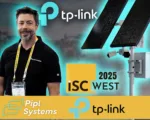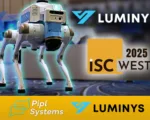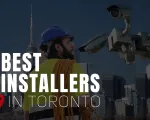- Camera Quantity – Data Storing. We will discuss a storage matter, how cameras quantity affect video file size, and how you can select the best storage option for your occasion.
- Installation place, which greatly defines which type of camera you need and which camera body form factor fits better in your case;
- Data transmission type – wireless Wi-fi or wired options, and what are the things to pay attention to?
- Image and video quality. Night mode, Infrared Illumination, megapixels, focal length, and many other parameters;
- Power transmission type and its arrangement;
1. Camera Quantity and Data Storage
It’s not a secret that when you purchase a camera, you have to think ahead and come up with how recordings from the camera will be stored. Of course, the more cameras you consider having in your setup, the higher video quality your recording will be, the bigger storage capacity you need. And there are 3 options:
- MicroSD cards;
- Video Recorder with Hard Drive;
- Cloud Storage;
Modern cameras often have from up to 64 to up to 256 GB of microSD capacity support. A hard drive is considered to have a capacity of 1 terabyte or more. The cloud storage depends on a subscription plan that you choose – it can be either monthly, with 30 days of storing a continuous recording, or any other plan that you choose, which directly affects the cost.
Why would you use the microSD card option?
Mostly, if you want to store videos that were recorded at the event only, like the event of spotting a motion. In this mode, when the camera records video only of the event that occurred, it can hold out for quite a long period, about 2 or 3 weeks, for a 256 GB. MicroSD, depending on the scene intensity. Though these numbers are exemplary. If you want a continuous 24/7 recording, don’t count on more than a 1 week of video storage; it may even be too much.
Video Recorder + Hard Drive
The video recorder with HDD is a great option due to if you’ve got more than 3-4 cameras, it will be easier to manage them all in one place, plus with a high-capacity hard drive, you can count on days and weeks of recordings stored for a bunch of cameras. But again, it depends on the recording type – event-triggered or continuous.
Cloud Storage
The last option here is cloud storage. Frequently used and quite convenient. You don’t worry about any microSD or HDD, and that the storage will soon overflow and exceed its capacity, you don’t have to count anything – pick a plan from a manufacturer, based on your cameras, their recording quality, and for how long you want your videos to be stored. The most expensive option, though.
2. Installation Place & Body Protection
As mentioned, what greatly defines the type and form-factor of the security camera that you need. It is divided into indoor and outdoor. And starting from that, there are indoor and outdoor security cameras, that differ by body structure and features, based on body structure. Those features are: IP Ingress Protection level, or dust tightness and water resistance, which are mandatory for an outdoor-type security camera to protect the camera against dust, moisture, rain, snow, and any other weather. And there is IK Vandal resistance, and it is about a protection against an impact applied to the camera, that ranges from level 0 to level 10 and 10+, equivalent to the impact force that the camera can withstand.
So that’s some advice – an outdoor camera is better installed where a man cannot reach it and harm it in any way, but IK level is not necessary, your outdoor camera must have a good level of IP Ingress Protection. Now the body types for outdoor cameras – it can be metal or plastic material, dome or bullet-type body, and there’s a variety of forms brought by a number of manufacturers, so that is not anymore that narrow, but there must be IP ingress protection.
The indoor cameras, though, are not made in a bullet-type body, so we can pretty much relate bullet-type form with outdoor cameras only. Indoor cams can be dome type, round, square or whatever, they can be made from metal or plastic – it doesn’t matter here, it’s all about aesthetics, and they don’t have to have Ingress Protection, but sometimes, they may have IK Vandal Resistance if that’s a camera to be installed in some public place. And there are home wi-fi type cameras, which are still related to indoor type, but with their specific features, we’ll look into that further.
3. Data Transmission Type
Now let’s talk about how the data transmission process is happening – and there are 2 options: wireless wi-fi, wired coaxial for analog or twisted pair cables for network, and all of these options are applicable both to indoor and outdoor security cameras. Though here you have a split: if that’s a coaxial cable, we are talking about the analog video surveillance, where video and audio are transferred via coaxial cable to the video recorder.
And we have twisted pair, or UTP, used for IP network-based cameras, when video and audio are transferred via network and can be accessed from any other device connected to the network: PC, phone, NVR. Though every camera system nowadays supports a remote view and control, of course, you need to ensure that you have a network in the location with cameras. It can be either wired-type, wireless Wi-fi from a router, or a 3G-4G Modem on the spot. Though if your outdoor camera is a wireless Wi-fi type, make sure the connection is stable, and better use a cable, or both. There are cameras like that, like this Ezviz C3WN, which is outdoor, with a protected body, supporting both wired and wireless network connections.
4. Image & Video Quality
Image quality in day and night time, video resolution, infrared illumination, and lens focal length. To not go too deep – yes, megapixels and recording resolution. The more megapixels, and consequently, the higher resolution, the more detailed the image you get. Roughly speaking, 2-megapixel 1080p allows you to see good at a distance up to 10 meters, 4 megapixels gives you about up to 20 meters, and 8 mp is between 30 and 40 meters of a clear and detailed view. So, it’s about how far you want to see the image, good and detailed, very rough numbers though.
Focal Length
The next parameter in line is a camera’s lens focal length, which defines the field of view and how detailed objects will look that are located at a greater distance. It starts from about a 2.8 mm lens that gives about 100 to 110 degrees FOV, which is considered a big view angle. Then it’s 4 mm. with around 80-85 degrees view angle, next it’s, let’s say, 6 mm. with about 50-55 FOV. So, the narrower your lens focal length is, the fewer objects you see around the camera, and the narrower your view angle is. But at a greater distance with a narrow focal length, objects will be much more detailed, because the focus will be on the objects that are farther away.
Typically, you get a 2.8 mm lens for indoor use, and 3.6 and 4 mm. and bigger for outdoor use. If you want to see the entire room, you need a wide focal length, but if what matters is an object at some distance away from the camera, you need a narrower lens that will allow you to see details over a greater distance. And there are varifocal lenses, allowing us to change the camera’s focal length physically to switch between different view angles.
Night View
Now, the parameter of night view is associated with infrared illumination. The infrared light LEDs are what allow the camera to see at night. You know, these LED bulbs on the camera’s front, just like in the picture you are higher. So when it’s getting dark, these lights turn on and act as a floodlight with infrared light, invisible to our eyes. We get a black and white image due to technological specifics. In the camera’s specifications, this is indicated with IR range, usually starting from 10 meters, which is normal for home cameras, and reaching 100 and more for outdoor ones. What I want to say here, depending on where you want to install your camera, beforehand, try to estimate the area that you want to be visible at night and select the camera based on that.
5. Power Transmission
Well, of course, the regular ones are: a power adapter, a power over coaxial cable for analog cams, power over Ethernet cable for network cams, but they all imply a direct power transmission, and also, there are battery-powered cameras as well. But the option I want to bring up for your consideration is an uninterruptible power supply. A best fit for those who don’t want to lose even a single hour of recording, and if you frequently have issues with the electricity, that’s a must-have for you. Or battery-powered cams, a great option as well.
Conclusion
You have just learned which things to pay attention to when purchasing a video surveillance camera (I hope). Camera’s specifications depend on the install location, the other important parameter is storage for videos from your security camera. Then there was image quality, megapixels and camera’s focal length to determine the detailed view range, and the area size that you want to cover with video surveillance, which affects night view infrared illumination parameter. In the opinion of Pipl Systems, these are the things you should pay attention to when selecting a video surveillance camera.
























